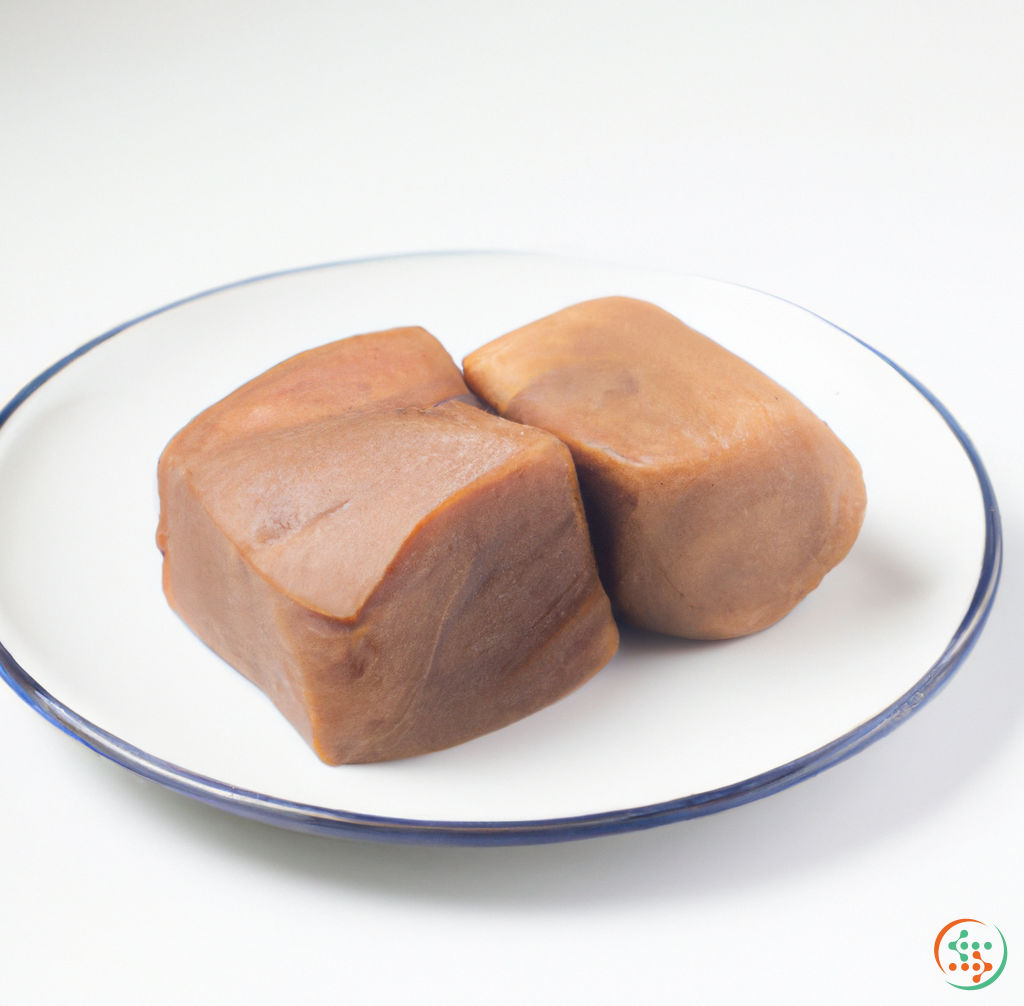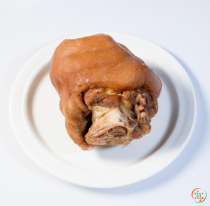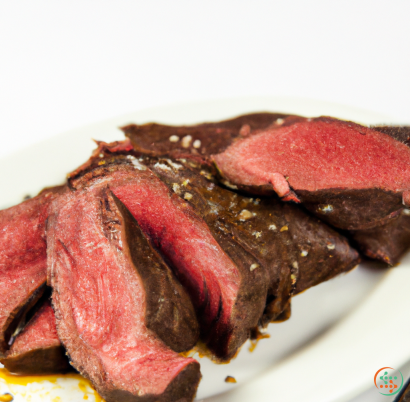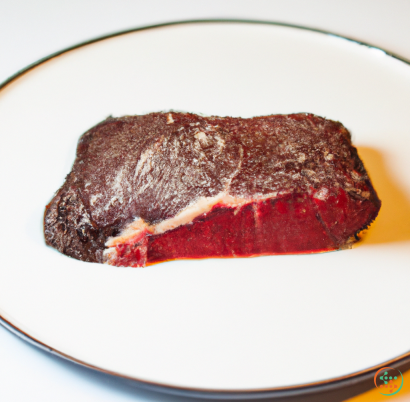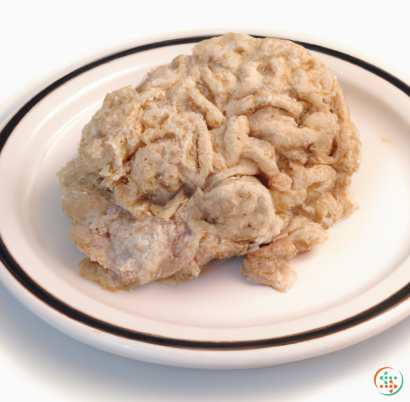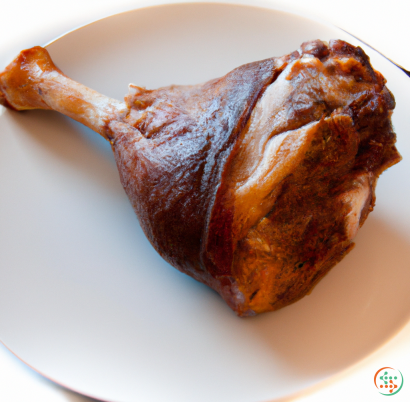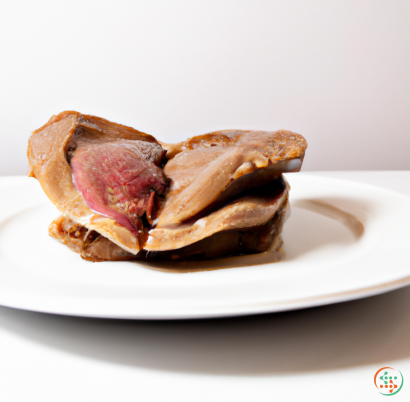Beef Tallow
Beef tallow is a fat that has been used for centuries in cooking and in the production of products for both human and animal consumption. It is a type of rendered animal fat, in particular, the subcutaneous fat of cattle that has been melted and strained. Beef tallow is a great source of dietary fat and has many health benefits.
Tallow is a form of animal fat, usually derived from beef (or sometimes mutton or goat). Rendering refers to the process of melting down the fat to separate out the oil, proteins, and other lipids. Once strained, the remaining melted fat is referred to as beef tallow. The word “tallow” comes from the Old English word tælwe.
Tallow has been used since ancient times in various ways. In Ancient Rome, it was used as a lamp oil and for other purposes such as soap-making. In Medieval Europe, it was used extensively in the production of soap, candles, and leather dressing. In the early 20th century, it was often used as an industrial lubricant, and it is still used today as a lubricant in some kinds of machinery.
Beef tallow is high in unsaturated and saturates fats. It is a triglyceride composed primarily of stearic acid, palmitic acid, and oleic acid. It is high in short-chain and medium-chain fatty acids, which purportedly helps to boost immunity and protect against harmful organisms. It is also high in vitamin A, which is essential for proper immune system functioning, and in conjugated linoleic acid (CLA). CLA is thought to have numerous health benefits, such as aiding in weight loss, reducing inflammation and improving blood sugar levels.
One of the biggest benefits of using beef tallow is its heat tolerance. When compared to other animal fats, such as poultry fat, lard, and butter, beef tallow has the highest smoke point. Meaning it can be heated to the highest temperatures without burning. This makes it a great choice for frying and other high-heat cooking methods. It also has a longer shelf life than other animal fats, so it can be stored without refrigeration.
When using beef tallow, it should be kept refrigerated and used soon after purchasing. It can also be stored in an airtight container for up to two months in the refrigerator. Always discard any rancid beef tallow, as it can harbor harmful bacteria.
Beef tallow can be used as a substitute for butter or other cooking fats when sautéing or searing meats. It can also be used to make various stocks and stews. For those who don’t eat animals, a vegan alternative to beef tallow is coconut oil. This oil is just as heat tolerant and contains healthy fats and antioxidants, although it is best to avoid frying with it.
At this point, you should understand the basics about beef tallow. While it does contain saturated fats and has a longer shelf life than other fats, it is nonetheless a good form of dietary fat and can be used in a variety of different culinary ways. And with its high smoke point and long shelf life, it can be a great addition to your kitchen. So why not give beef tallow a try and see what you think?
Introduction
Beef tallow is a type of fat commonly used in cooking. In its raw state, it is a hard, yellow substance with a high level of saturated fat and is easily stored at room temperature. While it’s been a traditional cooking fat for centuries, the last several decades have seen a shift away from its utilization due to the increasing public health focus on consuming healthier fats. Despite this shift, the production and use of beef tallow is still a highly relevant and significant process as it provides multiple usages and benefits.
In this blog post, we will explore the journey beef tallow takes before arriving on your dinner plate. We’ll start by examining the process of creating beef tallow and its different uses. We’ll then consider how beef tallow moves from the production plant to the consumer. Finally, we’ll talk about some of the health and environmental impacts of beef tallow production and consumption.
Creating Beef Tallow
Producing beef tallow begins with a side or half-side of beef that has been separated from its bones by either dry or wet processing. During dry processing, the beef is exposed to dry air for approximately two to four weeks until it has reached the appropriate level of dehydration.
If using wet processing, the beef is steamed to soften and break down the muscle fibers which releases the fat within them. During this process, the juices that are produced are separated from the fat particles through a centrifugal process. The fat particles are then boiled and strained to produce the resulting tallow. This process, when done right, produces a superior product and is the preferred method in many places.
Once the tallow has been processed, it often undergoes a refining process to remove any remains of particularly unpleasant odor and flavor. During this process, it is further heated and stirred with either citric acid or carbon dioxide to neutralize any undesirable substances.
Uses and benefits of Beef Tallow
Beef tallow has a variety of uses and benefits due to its unique properties.
Firstly, its composition makes it an excellent cooking oil that has a high smoking point, making it suitable for deep-frying. This is why it is used extensively in the deep-frying of food products across the world, such as French fries, tempura, and falafels. In addition to this, beef tallow’s composition means that it makes food more flavorful and adds richness to dishes, much like olive oil does.
Furthermore, beef tallow is a great source of energy for animals. As a result, it is widely used to produce feedstuffs for livestock. It is also a great base ingredient for making soap and biodiesel.
Journey to the Dinner Plate
Once beef tallow is created and refined, it is packaged and sent to wholesalers. From the wholesalers, the product is then sent to retailers and supermarkets, where consumers can purchase it. This journey from the production plant to your dinner plate typically takes around a few days to a week, depending on the location of the production plant and the retailer.
Additionally, beef tallow is also a popular ingredient for restaurants, who need the product to produce high-quality dishes. To meet their demand, most restaurants purchase their beef tallow directly from wholesale food suppliers who are located closer to them in order to minimize delays in delivery.
Health and Environmental Impacts
Consumption of beef tallow has been linked to numerous health issues. As it is a highly saturated fat, its frequent use can lead to high levels of cholesterol in the body and an elevated risk of obesity, heart disease, and diabetes. Therefore, beef tallow should not be consumed in excess and individuals should focus on consuming healthier fats such as olive oil, avocado, and coconut oil.
In terms of environmental impacts, producing beef tallow does not create any major negative environmental effects. Although animal renders do release some air pollutants during the process of collecting the fat from animals, the releases are not considered to be significant.
Conclusion
In conclusion, this post has looked at the journey beef tallow takes to get to your dinner plate. Starting from its production process and the unique properties it possesses, to its various uses and benefits, and finally to its movement from the production plant to the dinner plate. Additionally, the post highlighted some of the health and environmental issues associated with producing and consuming beef tallow. While beef tallow is a great source of flavor, its regular consumption should be limited due to the health risks associated with it.
| Vitamin D | 0.7 ug | |
| Vitamin D3 | 0.7 ug | |
| Vitamin E | 0.0027 grams | |
| Vitamin B4 | 0.0798 grams |
| Selenium | 0.2 ug |
Daily Value 0.055 mg
|
| Total Sugars | 0 ug |
per 100g
|
| Lauric acid (12:0) | 0.9 grams |
|
| Myristic acid (14:0) | 3.7 grams |
|
| Palmitic acid (16:0) | 24.9 grams |
|
| Stearic acid (18:0) | 18.9 grams |
|
| Total Saturated fatty acids: | 48.4 g | |
| Oleic acid (18:1) | 36. grams |
|
| Palmitoleic acid (16:1) | 4.2 grams |
|
| Gadoleic acid (20:1) | 0.3 grams |
|
| Total Monounsaturated fatty acids: | 40.5 g | |
| Linolenic acid (18:3) | 0.6 grams |
|
| Linoleic acid (18:2) | 3.1 grams |
|
| Total Polyunsaturated fatty acids: | 3.7 g | |
| Cholesterol | 0.11 grams |
|
| Total Sterols: | 0.11 g | |
